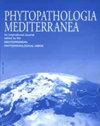Current status of grapevine trunk disease pathogens on asymptomatic nursery-produced grapevines in Türkiye
IF 1.9
3区 农林科学
Q2 AGRONOMY
引用次数: 1
Abstract
Good health of grapevine plants is important for productivity and sustainability of newly established vineyards, and accurate detection of bacterial and fungal pathogens is a prerequisite for managing the diseases they cause in nurseries. This study screened marketable, bare-rooted grapevine plants, obtained from different geographical regions of Türkiye, for fungal pathogens associated with grapevine trunk diseases (GTDs). In 2021, 43 grapevine nurseries located in eight provinces were surveyed to reveal the status of GTD pathogens on asymptomatic marketable plants. Fungal pathogens isolated from the roots and basal parts of asymptomatic dormant grapevines were identified using with morphological characteristics and molecular markers, and were subjected to pathogenicity tests. Six species; Cytospora viticola, Diaporthe ampelina, Diplodia seriata, Lasiodiplodia brasiliensis, Neofusicoccum parvum, and Truncatella angustata (associated with dieback), and six species; Cadophora ferruginea, Cadophora luteo-olivacea, Cadophora malorum, Phaeoacremonium minimum, Phaeoacremonium tuscanicum and Phaeomoniella chlamydospora (associated with Petri disease) were identified based on DNA sequencing of ITS and TEF1-α genes. GTD pathogens were detected in 12 and 14 of the 43 nurseries, respectively. Pathogenicity tests on 1103P vines revealed that all species were pathogenic (N. parvum and C. luteo-olivacea being the most virulent), and caused significant wood necroses when compared to non-inoculated experimental controls. This is the first report of C. ferruginea, C. malorum, L. brasiliensis, and P. tuscanicum associated with GTDs in Türkiye.我国无症状苗木葡萄树干病病原菌现状研究
葡萄藤植株的健康对新建立的葡萄园的生产力和可持续性很重要,准确检测细菌和真菌病原体是管理它们在苗圃中引起的疾病的先决条件。本研究筛选了产自 rkiye不同地理区域的可销售的裸根葡萄植株,以检测与葡萄树干病(gtd)相关的真菌病原体。2021年,对位于8个省的43个葡萄藤苗圃进行了调查,以揭示无症状市场植物上GTD病原体的状况。从无症状休眠葡萄的根部和基部分离真菌病原,利用形态特征和分子标记对病原菌进行鉴定,并进行致病性试验。六个物种;葡萄胞孢子、黑桃胞孢子、serdiplodia seriata、brasiliensis、Neofusicoccum parvum、Truncatella angustata(与dieback有关)6种;通过ITS和TEF1-α基因的DNA测序,鉴定出与Petri病相关的铁芥、黄豆芥、甘露芥、最小褐顶孢、tuscanic褐顶孢和衣孢褐顶孢。43个苗圃中分别有12个和14个检测到GTD病原菌。在1103P株上进行的致病性试验表明,3种病原菌均具有致病性,其中以小芽孢霉(N. parvum)和黄橄榄孢霉(C. luteo-olivacea)的致病性最强,与未接种的对照相比,造成了显著的木材坏死。这是首次报道在基ye中发现与GTDs相关的C. ferruginea、C. malorum、L. brasiliensis和P. tuscanicum。
本文章由计算机程序翻译,如有差异,请以英文原文为准。
求助全文
约1分钟内获得全文
求助全文
来源期刊

Phytopathologia Mediterranea
生物-植物科学
CiteScore
4.40
自引率
8.30%
发文量
28
审稿时长
6-12 weeks
期刊介绍:
Phytopathologia Mediterranea is an international journal edited by the Mediterranean Phytopathological Union. The journal’s mission is the promotion of plant health for Mediterranean crops, climate and regions, safe food production, and the transfer of new knowledge on plant diseases and their sustainable management.
The journal deals with all areas of plant pathology, including etiology, epidemiology, disease control, biochemical and physiological aspects, and utilization of molecular technologies. All types of plant pathogens are covered, including fungi, oomycetes, nematodes, protozoa, bacteria, phytoplasmas, viruses, and viroids. The journal also gives a special attention to research on mycotoxins, biological and integrated management of plant diseases, and the use of natural substances in disease and weed control. The journal focuses on pathology of Mediterranean crops grown throughout the world.
The Editorial Board of Phytopathologia Mediterranea has recently been reorganised, under two Editors-in-Chief and with an increased number of editors.
 求助内容:
求助内容: 应助结果提醒方式:
应助结果提醒方式:


